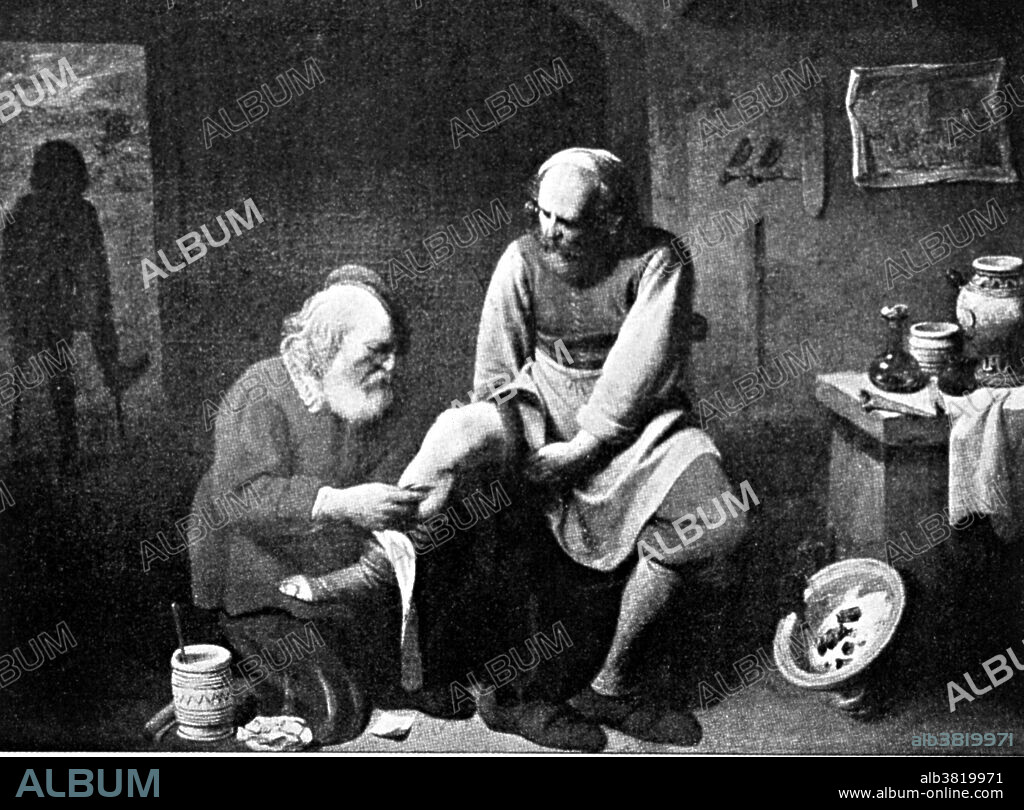alb3819971
Barber-Surgeon, Bloodletting

|
Add to another lightbox |
|
Add to another lightbox |



Title:
Barber-Surgeon, Bloodletting
Caption:
Reproduction of 17th century painting by David Ryckaert of a barber surgeon bloodletting. In Europe in the 13th century a new type of craftsmen emerged in towns; the barber-surgeon. They cut hair, they pulled teeth and they performed simple operations such as amputations and setting broken bones and looking after soldiers during or after a battle. Barber-surgeons performed a technique for reconstructing the nose paving the way for the development of modern plastic surgery. The barber surgeon was one of the most common medical practitioners of medieval Europe. Traditionally barbers have a white and red striped pole outside their shop. In the Middle Ages, when many people were illiterate, barber-surgeons hung out a white and red pole to represent blood and bandages. Bloodletting (or blood-letting) is the withdrawal of often little quantities of blood from a patient to cure or prevent illness and disease. Bloodletting was based on an ancient system of medicine in which blood and other bodily fluid were considered to be "humors" the proper balance of which maintained health, but it often weakened sick patients. It was the most common medical practice performed by doctors from antiquity up to the late 19th century, a time span of almost 2,000 years.
Credit:
Album / NLM/Science Source
Releases:
Model: No - Property: No
Rights questions?
Rights questions?
Image size:
3630 x 2684 px | 27.9 MB
Print size:
30.7 x 22.7 cm | 12.1 x 8.9 in (300 dpi)
Keywords:
ANCIENT SYSTEM • ART • ARTWORK • BARBER SURGEON • BLEED (MEDICAL PURPOSE) • BLEEDING • BLEEDING, MEDICINE • BLOOD-LETTING • BLOODLETTING • BLOODLETTING, MEDICAL • BREATHING A VEIN • BW • DRAWING • HEMMORHAGE • HEMORRHAGE • HEMORRHAGED • HEMORRHAGING • HISTORIC • HISTORICAL • HISTORY • ILL PATIENT • ILLUSTRATION • ILLUSTRATIONS • MEDICAL • MEDICINAL • MEDICINE • MEDICINE: BLEEDING • MEDIEVAL • MEN • MIDDLE AGES • QUACKERY • SCIENCE • SICK PATIENT • SURGEON • TREATMENT
 Pinterest
Pinterest Twitter
Twitter Facebook
Facebook Copy link
Copy link Email
Email

